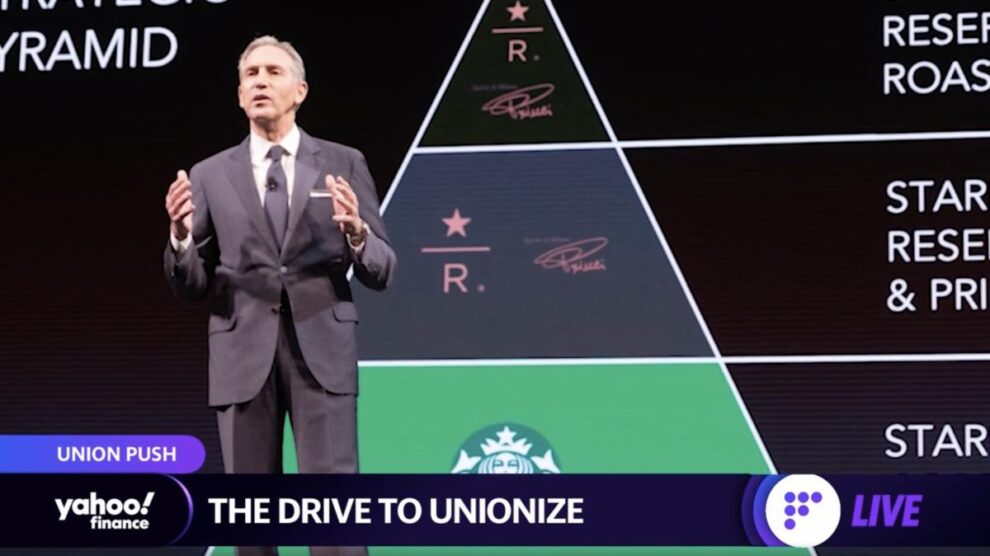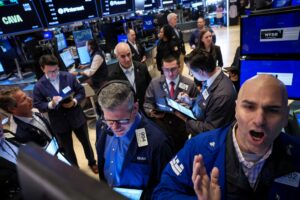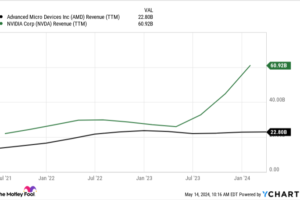Yahoo Finance’s Editor-in-Chief Andy Serwer examines the unionization movement within various American companies, union wins seen in Starbucks and Amazon, and how workers are treated overall.
Video Transcript
[MUSIC PLAYING]
DAVE BRIGGS: Welcome back. The push to unionize is spreading across some of America’s largest companies. And Yahoo Finance editor in chief, Andy Serwer, is here with a look at what’s driving the trend. Andy, is it COVID related like everything else in the world?
ANDY SERWER: I think it’s a case, you guys, of these companies, we’re talking about first of all, are Amazon, Starbucks, even Apple now, Google, Etsy, Activision, Blizzard, sort of the leaders of the new economy. And heretofore, these companies have been able to provide for the employees enough so that they didn’t feel like they were getting left behind.
But because of the stock market boom over the past five, six, seven years, the top executives have been making so much more the lower end executives feeling left out. Plus, as you say, there is a situation where COVID has made conditions to that much more difficult.
BRAD SMITH: There’s a lot of lessons learned along the way to actually form a better case for unionizing and even round up support among some of those employee bases too. How well is that paying off, as even if it’s not in your industry, you’re learning from what somebody at Amazon may have gone through in order for your Starbucks unionization fight?
ANDY SERWER: Yeah, I mean that’s a great point because we were talking to some unionizing experts. And they’re saying that the momentum plays a big part here. In other words, oh we could never organize against Amazon or Starbucks. That would never happen. And then when it does happen, it does provide big mo to people at other companies saying, wow. If these guys can do it, maybe even we can unionize Apple stores. I mean, who would have thought that a few years ago that those stores could be unionized?
DAVE BRIGGS: Yeah, making a effort to unionize the one over at Grand Central is the latest move. But because of the size of these companies and their role in our lives, Apple, and Starbucks, and Amazon, has it almost clouded the true picture, which is unions are actually shrinking by percentage and by number? But we pay so much attention because it’s the two biggest companies in our lives arguably.
ANDY SERWER: No, that’s an excellent point, David. I mean, unions continue to be weak. And this is just a tiny blip over a trend that has been going on, a downward trend for unions. Unions have been going on since 1970. And so we’re just seeing a little bit of a rebound. And it is, but it is, but it is at these incredibly high profile companies. And so it garners press attention. And then people are asking when it comes to Starbucks, that’s part of the narrative with Howard Schultz coming back is he’s a union buster. He’s going to fight the unions.
In other words, that’s really a sort of second or third question in the press conference now is like, what are you going to do with this stores, the service, the baristas, and then what about the unions?
BRAD SMITH: Right.
ANDY SERWER: So they’re garnering a tremendous amount of attention. And I don’t know if it’s going to spread to other companies as well. But it’s certainly not hurting that.
BRAD SMITH: Does this change shareholder sentiment at the end of the day?
ANDY SERWER: Yeah, it’s interesting because– this is actually interesting. So the American support for unions has actually risen a lot. So that has changed over the past 20 years. And I think that maybe speaks to the fact that people are cognizant of this wealth and income gap. So that’s really out there. I mean, we all know about that CEO to workers ratio, that the average CEO in the Fortune 500 is making 300 and– to 100 to 300 times what the average worker is making.
And that’s not lost on people. And it’s not just the CEO, you guys. I mean, it’s people in the C suites. The top five executives of all these top companies are making five, 10, 20, 30, 40, $60 million a year at a place like Google. And that adds up. And then the engineers, the top engineers as well.
DAVE BRIGGS: And it was interesting reading, Andy, Jassy’s shareholder letter. Not one word about unions, but a long section about how well they treat, and pay their employees, and how the injuries are a little bit clouded by press coverage. So on the defensive.
ANDY SERWER: I mean, and that’s a good point too, David. I mean, and these companies have changed so much. I mean, Amazon– could you imagine Amazon having thousands of people working in warehouses 10 years ago? Who would have thought? Or Apple with thousands of people working in retail. Who would have thought, right? So they’re very different companies too. And all these things, I think, are adding to this movement.
DAVE BRIGGS: Great discussion.
BRAD SMITH: And at a time where there’s such a big changeover in the type of employees, the retention, the attracting of talent.
DAVE BRIGGS: Labor market. Exactly.
ANDY SERWER: Tight labor market. We didn’t even talk about that. But that’s a big part of it too.
DAVE BRIGGS: Probably the biggest factor, honestly.
BRAD SMITH: For sure.
ANDY SERWER: Exactly.
BRAD SMITH: Yahoo Finance editor in chief Andy Serwer. Thanks for sticking around here with the afternoon crew here. We appreciate it.
ANDY SERWER: Good to see you guys.
DAVE BRIGGS: Have a good weekend, sir.
ANDY SERWER: Yup.
















Add Comment